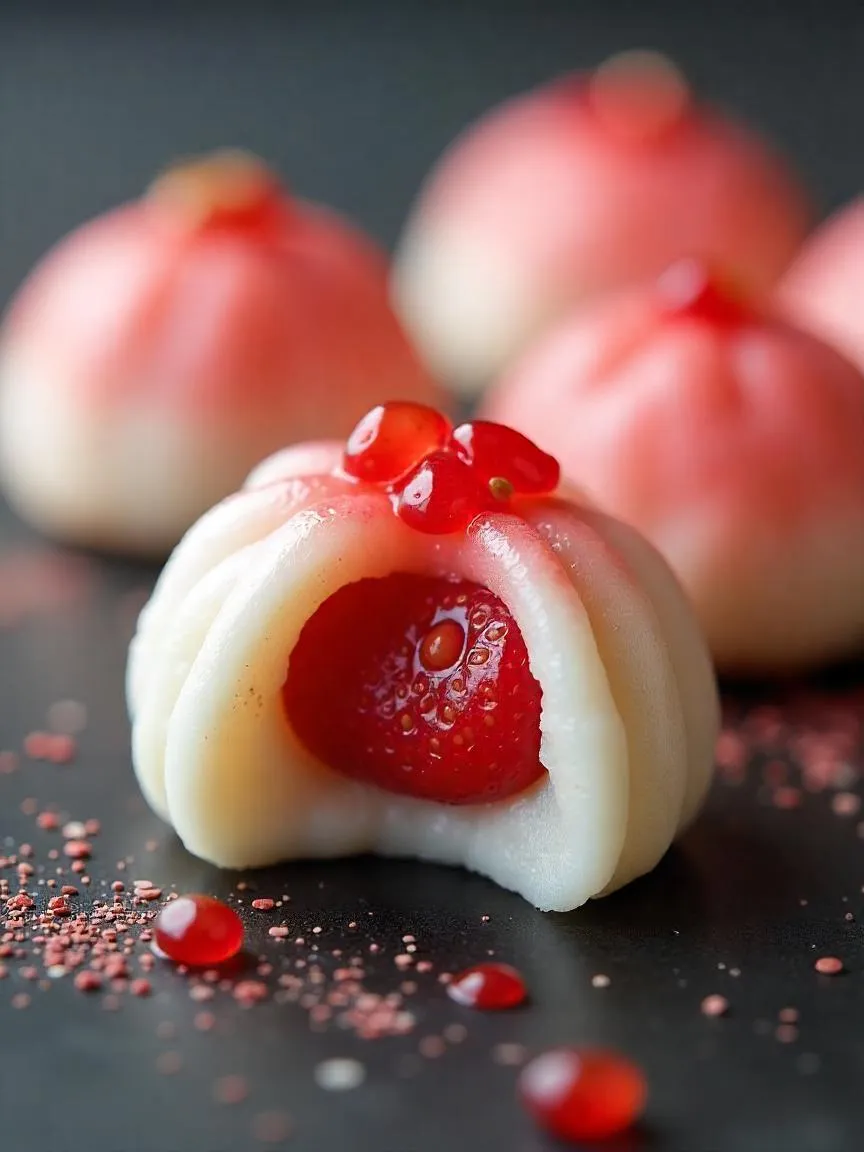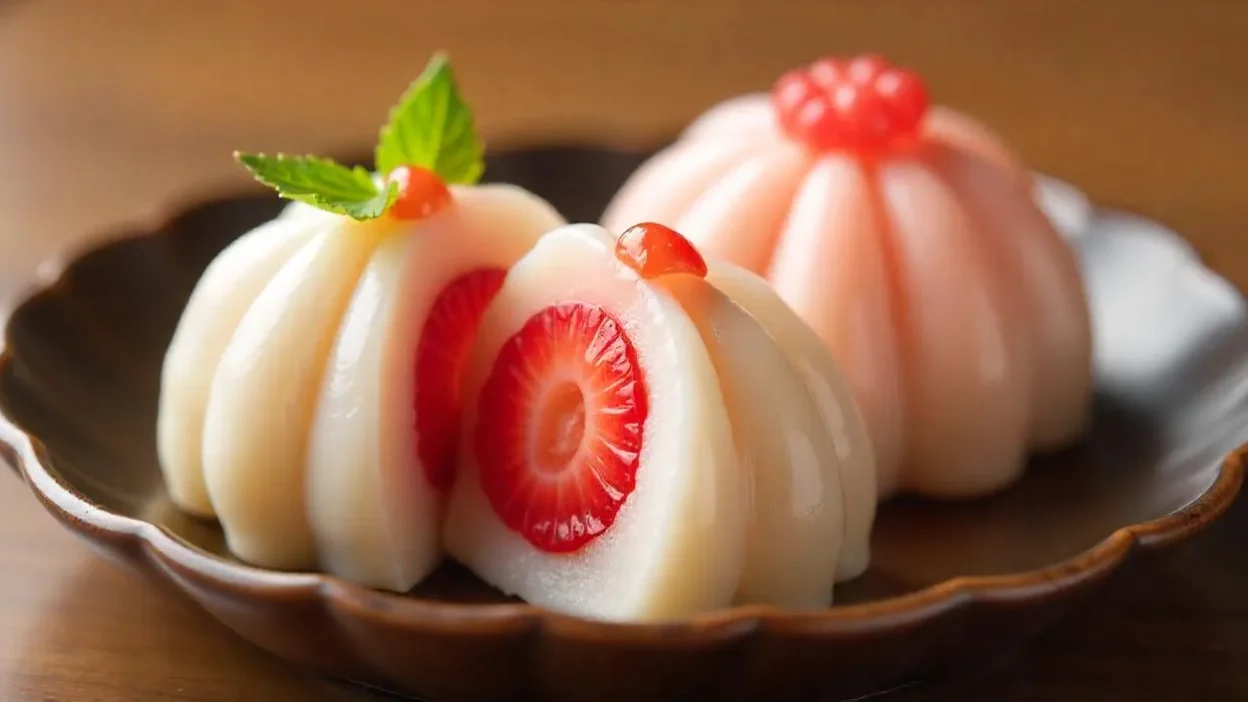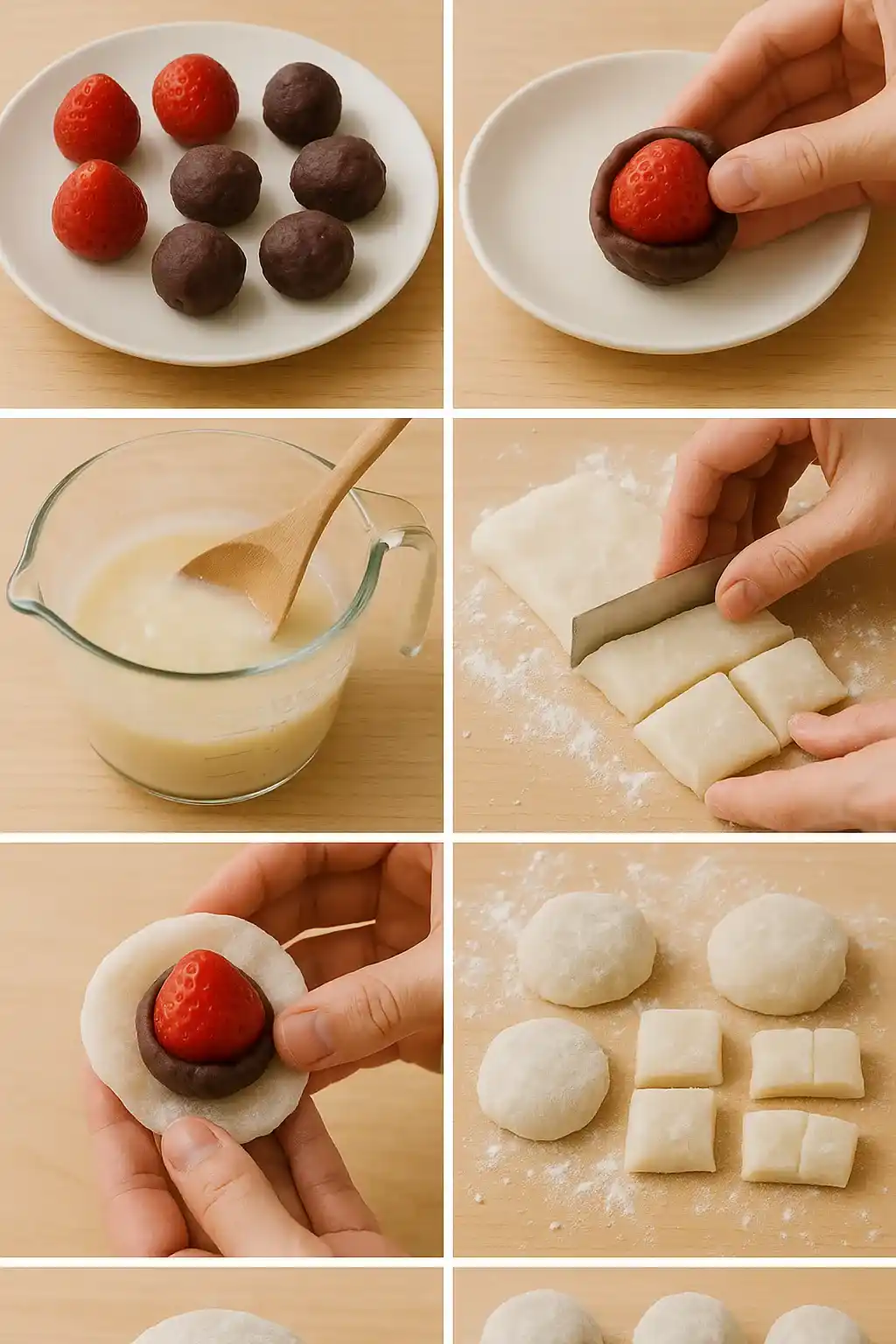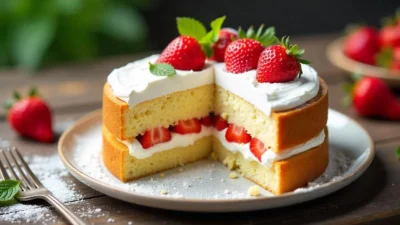Contents
Strawberry Daifuku is a classic wagashi—a delicate Japanese sweet made of chewy mochi rice dough wrapped around sweet red bean paste and a fresh strawberry. This treat perfectly balances subtle sweetness with refreshing fruitiness and a soft, chewy texture. It’s an easy-to-make dessert that captures the essence of seasonal Japanese confections and pairs wonderfully with a cup of green tea.
Ingredients
- 6 fresh strawberries washed and dried
- 100 g sweet red bean paste anko
- 100 g glutinous rice flour mochiko
- 50 g sugar
- 120 ml water
- Potato starch or cornstarch for dusting
Instructions
- Wrap each strawberry with a small amount of sweet red bean paste (anko). Set aside.

- In a microwave-safe bowl, mix mochiko, sugar, and water until smooth.
- Microwave the mixture for 1 minute, stir, then microwave in 30-second bursts until it becomes a thick, sticky dough (about 2–3 minutes total).
- Generously dust a clean surface with starch. Turn the mochi dough onto the surface and let it cool just enough to handle.
- Divide the dough into 6 equal portions. Flatten each portion into a round shape.
- Place one anko-wrapped strawberry in the center of each flattened dough. Carefully wrap the mochi around the strawberry and pinch to seal the edges.
- Lightly dust the finished daifuku with starch to prevent sticking. Serve fresh on the same day for the best taste and texture.
Notes
🥮 Wagashi – how I fell in love with Japan’s secret desserts
Okay, this might sound dramatic—but wagashi changed the way I look at sweets forever.
🏮 First encounter
Picture this: I’m wandering through a Kyoto alley on a rainy spring day. Pretty cliché, I know—but it actually happened! The air smelled like wet stones and fresh green tea. Then, through a wooden shop window, I spotted tiny sweets shaped like cherry blossoms and maple leaves. I was like, “What on earth?” They looked more like art than food. I walked in.🎎 Why they’re surprising
I expected something super sweet. Instead, wagashi are subtly sweet—delicate. It’s not a sugar bomb. It’s more like a gentle whisper. And the texture? Incredible. One moment it’s soft, the next it’s chewy, then firm. It hit me like, “This is dessert… but different.”🍁 Seasons, stories, and shapes
Here’s what blew me away: wagashi change with the seasons. Cherry blossom-shaped in spring, chestnut-inspired in autumn. There’s this Japanese word “shun”, meaning “in season.” Wagashi totally nails that idea. One evening, I shared a sweet shaped like a red leaf with a friend as we watched fall leaves drifting down. We both went quiet. That moment sticks with me.🍵 Tea + snack = Moment of zen
Wagashi often come with matcha. Bitter green tea paired with these mellow sweets—balance in a bite. It’s practice, really. You take a little, sip tea. Pause. Reflect. I once sat in a tea house in Uji, holding a tiny wagashi, feeling that calming quiet. I was hooked.🥢 Simple ingredients, bold experience
But here’s the kicker: ingredients are basic—rice, beans, sugar, maybe seaweed. Yet they taste complex. It’s like someone turned everyday pantry stuff into mindfulness.- Mochi – chewy rice dough
- Anko – sweet red bean paste
- Kanten – plant-based jelly
- Kinako – roasted soybean flour
- Seasonal extras – chestnuts, pumpkin, matcha
🗾 Where to find wagashi in Japan
- Small, family-run wagashi shops (tiny, charming, seasonal)
- Tea houses during actual tea ceremonies
- Department store food floors (even Tokyo’s biggest have dreamy sweets underground!)
- Convenience stores—yes, even cheap daifuku and dorayaki can be legit







Ooh, this looks amazing! Strawberry daifuku is one of my absolute favorites, and the photos look incredibly tempting. That perfect balance of sweet red bean and juicy strawberry sounds divine. I’m definitely adding this to my “must-bake” list! Thanks for sharing the recipe! Can’t wait to try it. 😊